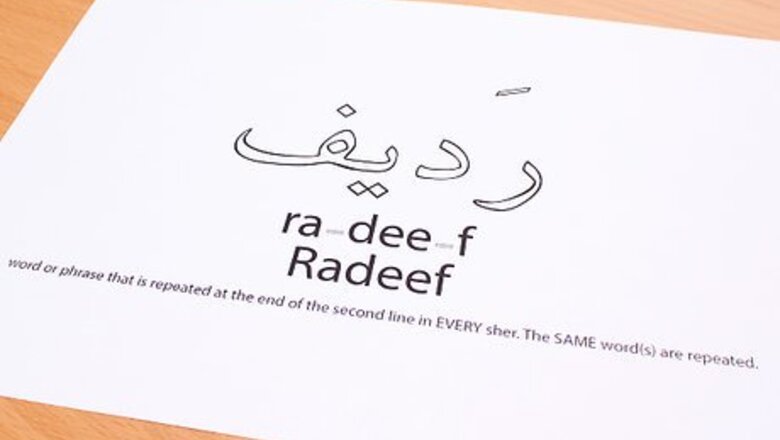
views
X
Research source
This fun and interesting poem is easy to write once you've nailed down the different rules and parts—and we're here to help you do just that! Read on for an in-depth look at how to draft your very own ghazal.Would you like to learn to write a ghazal? We will teach you!
Though at first the rules may seem a puzzle, we will teach you!
Decide what your radif is going to be.

Every verse ends with the same word or group of words (radif). It makes sense to choose one that can be flexible in use and meaning, so you can use it in different ways in each sher, or couplet. You're bound to make a few false starts, and you'll soon realise that your choice of radif is the single most important factor in determining how successful your ghazal is likely to be.
Consider what your qaafiya is going to be.

The qaafiya is a rhyme that precedes the radif. Again, pick something with lots of possibilities.
Choose your topic.
Traditional topics include wine and drunkenness. When taken literally, this is quite something when you consider the time and place of origin of this poetic form! When taken metaphorically, wine represents the divine, or a connection or conduit to the divine. Drunkenness represents a meal of this food for the spirit. Another traditional topic is love (where it's often deliberately ambiguous whether the poet is referring to divine love or love between two people). At the same time, however, the key word is "traditional". As with any poetic form, you can write about any topic that works. See also for example Patricia Smith's "Hip-Hop Ghazal".
Get writing.

A ghazal consists of a series of couplets (two-line verses). Each line contains the same number of syllables. Each couplet is a separate, complete mini-poem, so there's no need for any narrative progression, or any real connection between the couplets. Both lines of the first verse end with the qaafiya and radif. See down the page for an example ghazal. Remember, each couplet constitutes a separate little poem, so don't have one verse rely on a previous one to make sense.
Finish with a flourish.
Try to end with something subtle yet unexpected. This will cause the reader to ponder your words, and hence will add more depth to your ghazal. Traditionally, the poet's pen-name was included in the last verse; this final couplet usually contains a 'turn', or change of tone, to something more personal or quirky.


















Comments
0 comment